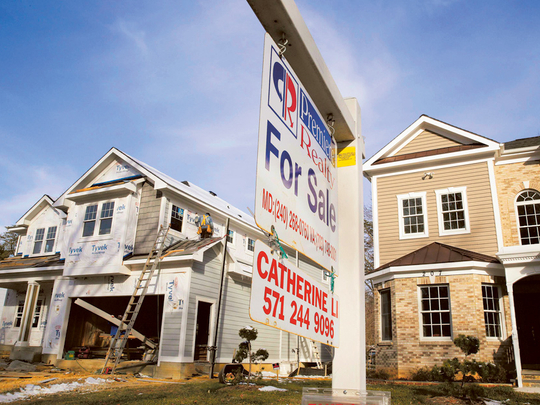
Washington: Sales of new US single-family homes fell for a second straight month in July, but a surge in the stock of properties on the market and slower price gains should help stimulate demand in the months ahead.
Other data on Monday showed activity in the vast services sector slowed again in August. The reports, however, did little to change views the economy is on a solid growth path, given relatively strong job growth and manufacturing activity.
“The housing market continues to recover,” said Sam Bullard, a senior economist at Wells Fargo Securities in Charlotte, North Carolina. “The fundamentals of strengthening job growth and hopefully stronger wage gains are still favourable.” New home sales slipped 2.4 per cent to a seasonally adjusted annual rate of 412,000 units, the lowest level since March, the Commerce Department said. While sales were weaker than economists expected, data for the past three months was revised to show 33,000 more new homes sold than previously reported.
The soft July sales pace is at odds with other data that have suggested the housing market recovery is back on track after buckling in the second half of last year.
Data last week showed a jump in new home construction and increased confidence among home builders about future sales and buyer traffic. Home resales hit a 10-month high in July.
Economists took the new homes sales data with a grain of salt given it is highly volatile from month to month. Compared to July last year, new home sales were up 12.3 per cent.
Separately, financial data firm Markit said its preliminary services Purchasing Managers Index dipped to 58.5 this month from 60.8 in July. Still, the index remained well above the 50 threshold that separates expansion from contraction, and it continued to mirror the strong gains seen in manufacturing.
The data suggested economic growth will continue to move forward at a steady clip in the third quarter, after bouncing back from a weather-related slump at the start of the year.
Housing volatility
Housing shares on Wall Street underperformed the broader market, where the Standard & Poor’s 500 index rallied to a record high, crossing the 2,000 threshold for the first time.
The housing index was down slightly, with home builder DR Horton off 1.3 per cent and Pulte Group down 0.3 per cent. Toll Brothers fell 1.1 per cent.
A run-up in mortgage rates and a shortage of homes on the market that pushed up prices had cut into sales in the second half of last year, leading the Federal Reserve to express concern at the sluggish housing recovery.
“We believe that ongoing volatility in housing will be one factor keeping the Fed from raising rates prematurely,” said Gennadiy Goldberg, an economist at TD Securities in New York.
But housing inventory is picking up and home price appreciation is slowing. The inventory of new houses on the market increased to a near four-year high, helping to restrain prices.
The median sales price increased 2.9 per cent from a year ago, marking a sharp slowdown from June, when prices were up 7.8 per cent year-on-year.
At July’s sales pace it would take 6.0 months to clear the supply of houses on the market, the highest since October 2011.











